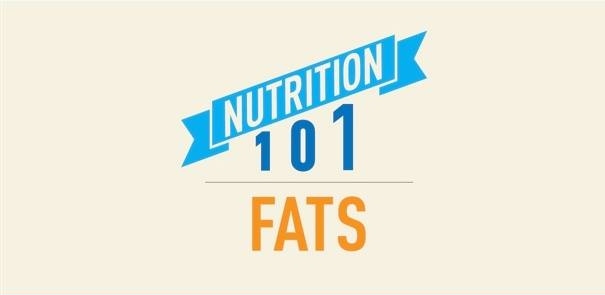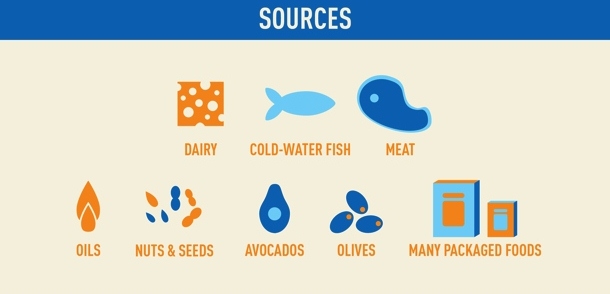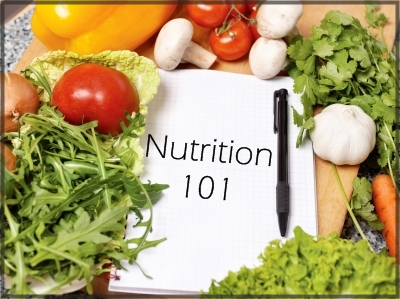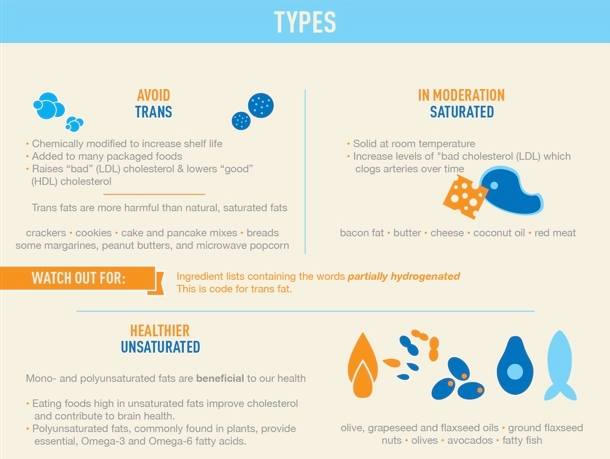 You may remember the low-fat/high-carb craze back in the 1990s. Butterless bagels were consumed with reckless abandon and reduced-fat cookies, crackers and chips occupied most of the prime real estate on grocery store shelves. Thankfully though, the field of nutrition has recovered from this misunderstood fat-phobia due to more recent research that’s shown certain types of dietary fat can actually improve our health, lower our risk for heart disease and the function and development our brains.
You may remember the low-fat/high-carb craze back in the 1990s. Butterless bagels were consumed with reckless abandon and reduced-fat cookies, crackers and chips occupied most of the prime real estate on grocery store shelves. Thankfully though, the field of nutrition has recovered from this misunderstood fat-phobia due to more recent research that’s shown certain types of dietary fat can actually improve our health, lower our risk for heart disease and the function and development our brains.
How Fats Are Used In The Body
In addition to tasting good and giving foods moisture, dietary fats also slow down digestion. This contributes to our feelings of satiety after a meal and slows the rate at which sugars from carbohydrates enter our blood stream. Shortly after a meal, dietary fat is digested into small chains of fatty acids in the gut. These fatty acid chains are then picked up by our intestinal cells, reassembled and packaged into vessels called chylomicrons, which are sent off to muscle and fat tissue. Once the chylomicrons arrive at the tissue, fatty acids are again released to be taken up by muscle and fat cells. How much fat goes where? Well, if you go for a walk after eating a meal, more fatty acids, as well as glucose, will be delivered to your active muscle tissues to meet their energy demands. If you lay down to take a nap, more of those fatty acids will be stored away in fat tissue simply because they’re not needed immediately for energy.
Dietary Fats
There are four main types of dietary fats–trans fats, saturated fats, mono- and polyunsaturated fats. The structure of these fats is what makes them behave differently in the body, and ultimately determines how they impact our health. The unhealthier fats have a reputation for negatively impacting our blood cholesterol which increases our risk for heart disease.
Trans Fat – The very, very bad Fat
Though it does occur naturally in some foods, most trans fats are synthetically made during food processing. To make trans fats, perfectly healthy unsaturated fats are blasted with hydrogen molecules so they look and act more like their saturated counterparts. These fats are more stable which means the food products they’re added to will last longer on supermarket shelves, spread easier and are easier to cook with. Unfortunately, these are also the worst offenders when it comes to our health. They’ve been shown to not only increase our bad (LDL) cholesterol, but decrease our good (HDL) cholesterol–a double whammy.
Saturated Fat- Bad fat use in moderation
Mostly solid at room temperature, saturated fats are largely found in animal-derived foods–like red meat and dairy products made from cream or whole milk. Some plants, like coconuts and avocados, are also rich in saturated fats but it’s important to remember that different fats behave differently, even when grouped in the same family. It’s the animal-based saturated fats that we should be most concerned about when watching our intake of these fats because these have been found to increase LDL cholesterol.
Mono- and Polyunsaturated Fats – The Good for you fat
Also known as MUFAs and PUFAs, these fats are generally recognized for their potential health benefits. They’re found in many vegetable and fish-based foods like plant-based cooking oils (i.e. olive, canola, grape seed oils). ground flaxseed, avocados, olives, nuts and seeds, and fatty fish like salmon or mackerel. These fats to be liquid at room temperature and work together to moderate things like inflammation, blood clotting, muscle contractions, as well as improve blood cholesterol levels and protect against heart disease.
How to Add Healthy Fats in Moderation to Your Diet
The IOM recommends a diet comprised of 20-35% of calories from fats, but as you can see, choosing the right or wrong ones can impact our health in two very different ways. Here are my top 3 tips to maximize the benefits and enjoyment of eating fats:
 Choose more plant and fish-based fats. Add foods like avocados, nuts, seeds and nut butters and fatty fish like salmon into your weekly menu. Cook with oils like olive or grape seed instead of butter or lard. Make salad dressings with flaxseed oil for a healthy dose of Omega-3s. You can even substitute some avocado for butter when baking!
Choose more plant and fish-based fats. Add foods like avocados, nuts, seeds and nut butters and fatty fish like salmon into your weekly menu. Cook with oils like olive or grape seed instead of butter or lard. Make salad dressings with flaxseed oil for a healthy dose of Omega-3s. You can even substitute some avocado for butter when baking!
Start reading ingredient lists. Avoid those that refer to any ingredient as partially hydrogenated – it’s code for trans fat! Keep your eye out for the biggest culprits–partially hydrogenated oils are commonly found in foods like peanut butter, baking mixes, commercial baked goods like cookies, crackers and cakes as well as some some margarines, lards and fried foods.
Pair nutrient-rich foods with healthy unsaturated fats. The fat soluble vitamins A, D, E and K, are better absorbed when eaten with some fat. Add oil-based vinaigrette’s to those colorful salads and choose 1% over skim milk to get more Vitamin D!
Fats have a place in every healthy, balanced diet–which is great because they add delicious flavor and texture to food as well as keep us feeling satisfied. The key is to choose more of the healthy and less of the bad fats–though in moderation, those are okay too every once in a while! Feel free to share some of your favorite healthy fats in the comments below. We’d love to hear them!
You may also like:
- Six Weeks to a Healthier Diet
- Smart Start Menu Series
- Tips for putting together healthy menus
- Walk Talk Series
Catch up on the whole Nutrition 101 series:
Just click on the link to take you to the topics in the series
- Nutrition 101 – Introduction to basic Nutrition
- Nutrition 101 – Calories
- Nutrition 101 – Carbohydrates
- Nutrition 101 – Proteins
- Nutrition 101 – Fats
- Nutrition 101 – Micronutrients ( Vitamins and Minerals)
- Nutrition 101 – Fiber
- Nutrition 101 – Water
- Nutrition 101- Recap – 5 Tips to Eat More Nutritiously




